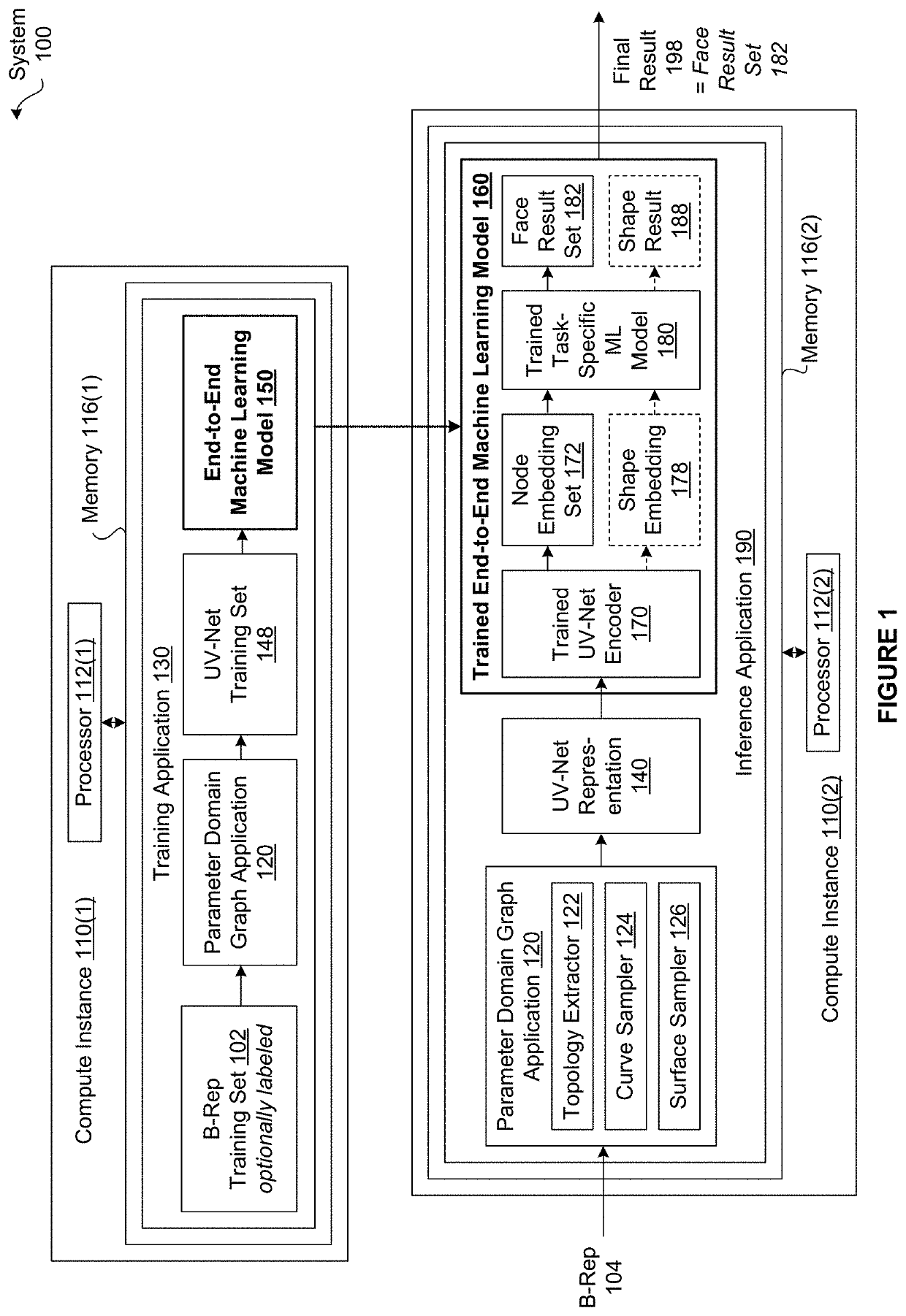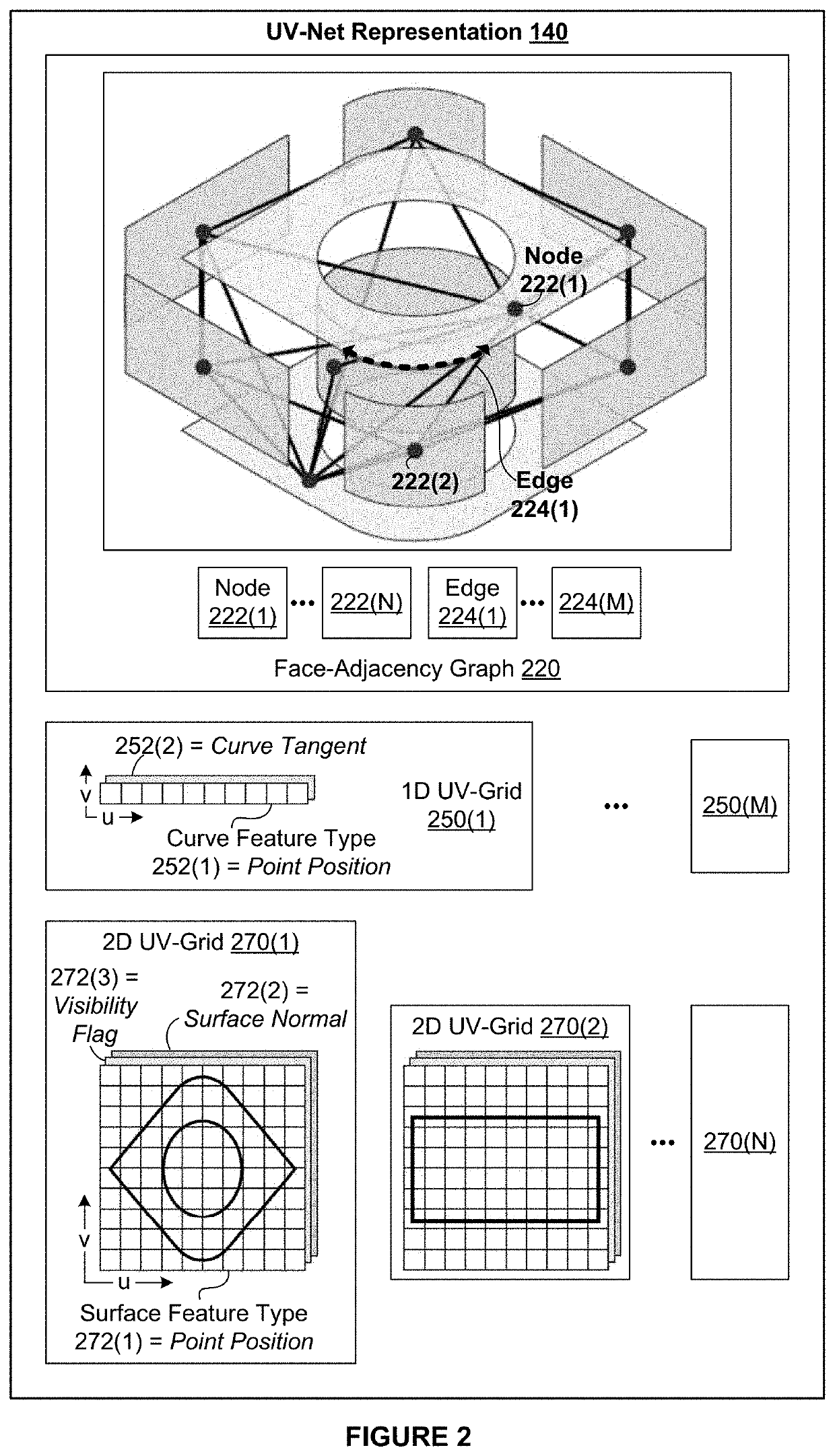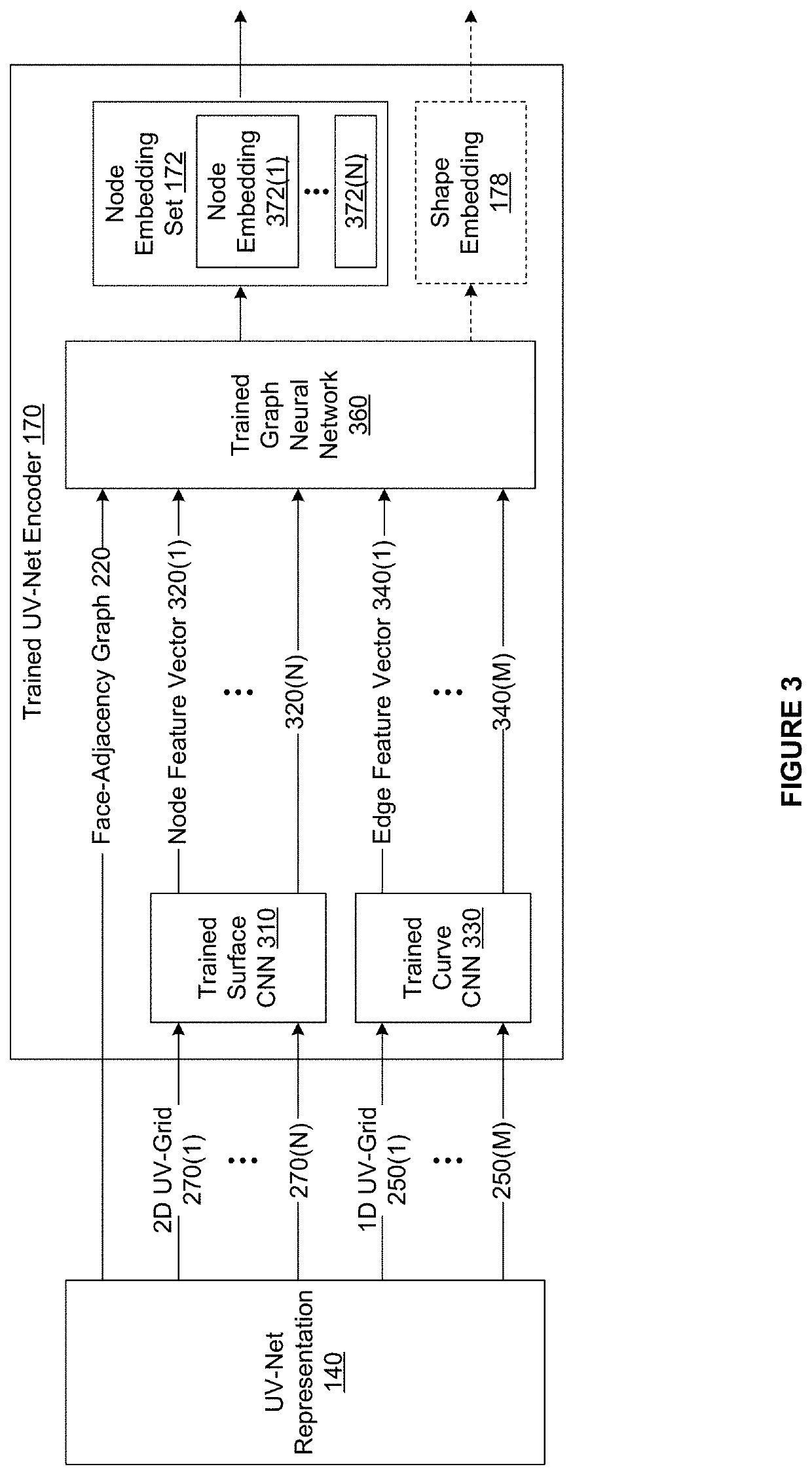Machine learning techniques for automating tasks based on boundary representations of 3D cad objects
a machine learning and object technology, applied in the field of three-dimensional (“ 3d”) mechanical design, can solve the problems of difficult processing of b-reps using neural networks, impracticality of training a conventional neural network to infer a useful final result from unstructured data, such as b-rep data, and achieve the effect of increasing the likelihood and efficient processing
- Summary
- Abstract
- Description
- Claims
- Application Information
AI Technical Summary
Benefits of technology
Problems solved by technology
Method used
Image
Examples
Embodiment Construction
[0002]Embodiments of the present invention relate generally to computer science and computer-aided design software and, more specifically, to machine learning techniques for automating tasks based on boundary representations of 3D CAD objects.
Description of the Related Art
[0003]In the context of three-dimensional (“3D”) mechanical design, computer-aided design (“CAD”) tools are software applications that streamline the process of generating, analyzing, modifying, optimizing, displaying, and / or documenting designs of one or more 3D CAD objects making up an overarching mechanical design. Many of these types of CAD tools represent 3D CAD objects computationally using boundary-representations (“B-reps”). Each B-rep is a collection of connected surfaces that define the boundary between the interior of a 3D CAD object and the exterior of the 3D CAD object. More specifically, a B-rep specifies discrete topological entities, connections between the topological entities, and continuous geome...
PUM
 Login to View More
Login to View More Abstract
Description
Claims
Application Information
 Login to View More
Login to View More - R&D
- Intellectual Property
- Life Sciences
- Materials
- Tech Scout
- Unparalleled Data Quality
- Higher Quality Content
- 60% Fewer Hallucinations
Browse by: Latest US Patents, China's latest patents, Technical Efficacy Thesaurus, Application Domain, Technology Topic, Popular Technical Reports.
© 2025 PatSnap. All rights reserved.Legal|Privacy policy|Modern Slavery Act Transparency Statement|Sitemap|About US| Contact US: help@patsnap.com



